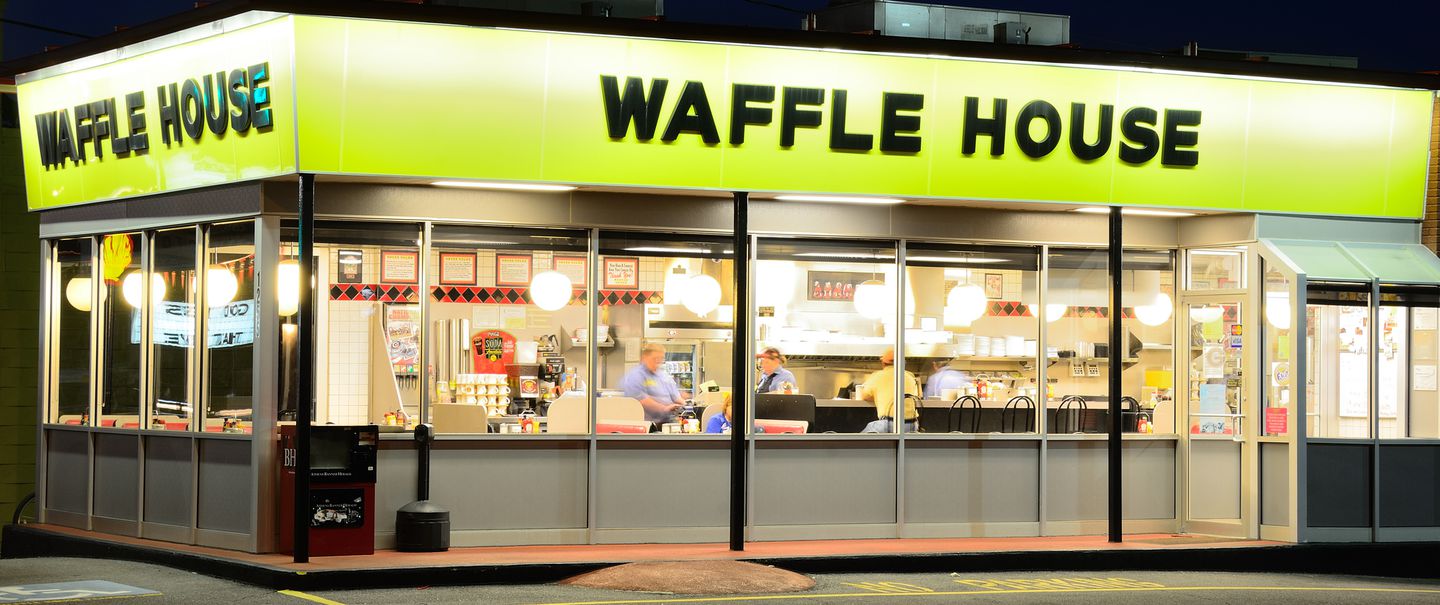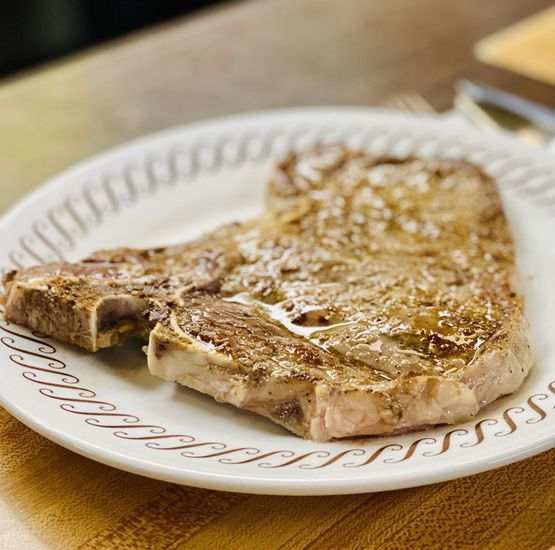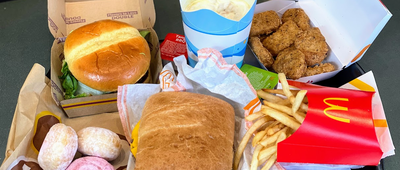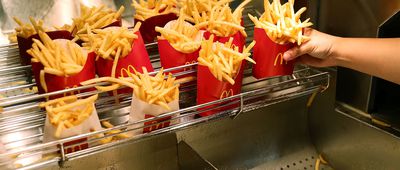One vertically-oriented, right-side-up jelly packet on a plate signifies two eggs. If somebody orders one, three, or four eggs, here’s how to mark that:
- Stick a jelly packet on top of a ketchup packet for one egg.
- Stick a mustard packet underneath the jelly for three eggs.
- Stack two jelly packets on top of each other for four eggs.
On a large platter, the jelly packet does the double-duty of explaining how the customer wants their toast and eggs.
- A jelly packet on the bottom center signifies two eggs, scrambled.
- For a light, runny scramble, a mayo packet needs to be placed upside-down above the jelly. For well-done, the packet will be right-side-up.
- Done-ness of a standard fried egg goes from left to right across the plate. For over-easy eggs, put the jelly packet on the left side of the plate in the center. For over-medium, it goes in the dead center, and for over-well, centered on the right.
- For sunny side-up, the jelly goes in the center at the top of the plate.
- Basted eggs (partially cooked on the grill) are denoted with a jelly packet in the center, above the over-easy spot and below the sunny side-up spot.
- The jelly goes above the scrambled spot and below the over-easy spot for poached eggs.
Confused yet? Scrambled eggs with cheese are a big deal at Waffle House, too. This is the part of the system that makes the least sense to me.
- For an egg scrambled with cheese, put down a slice of cheese on the plate. There should be one slice of cheese per egg to be cooked.
- For some reason, you still need to include a mustard packet if there are three eggs. I would have assumed the three slices of cheese convey that message, but I am not the Waffle House wizard/prankster who designed this system.
- This process gets even stranger, since employees are instructed to tear off a little corner of a cheese slice and put it on top of the jelly. I have absolutely no idea how this is helpful, considering the cheese slices are already there to indicate cheese.
Remember when I said the jelly refers to the toast? Here’s how.
- Right-side-up jelly packets refer to white toast.
- Upside-down jelly is for wheat.
- Swap the jelly for apple butter for raisin toast.
- For unbuttered toast, put a butter cup under the jelly.
- If the customer wants a biscuit or Texas toast instead of the standard white toast, put a biscuit or slice of Texas toast on the left side of the plate.
These plates all come with grits and white toast. What if somebody wants to change that up?
- To add hash browns, a few shreds of hash browns go up at the top of the plate. Same deal if the customer wants sliced tomatoes.
- For oatmeal, a napkin goes up top, as a landing pad for a bowl.
- No grits? There’s a smaller plate that you use for this. All you have to do is stick the jelly in the correct position on this plate to show this order has no grits.
- To skip the toast as well, there’s an even smaller plate. A side dish, essentially.
- Standard plate with all the fixings except toast? Stick a butter knife diagonally on the plate.
Don’t worry. They’ve also got omelets. A right-side-up jelly packet turned and oriented to the left is the marker for this. Where you put the packet on the plate in this case shows what kind of ingredients the omelet will have.
- The top of the plate is for ham.
- The right side is for sausage.
- The bottom is for bacon.
- The left is for a no-meat omelet.
- Cheese under the jelly means a cheese omelet.
- Salad dressing under the jelly is for a Fiesta Omelet.
- Here’s an insane one: A right-side up ketchup packet above a jelly packet on top of two slices of cheese means, you guessed it, a cheesesteak omelet.
















